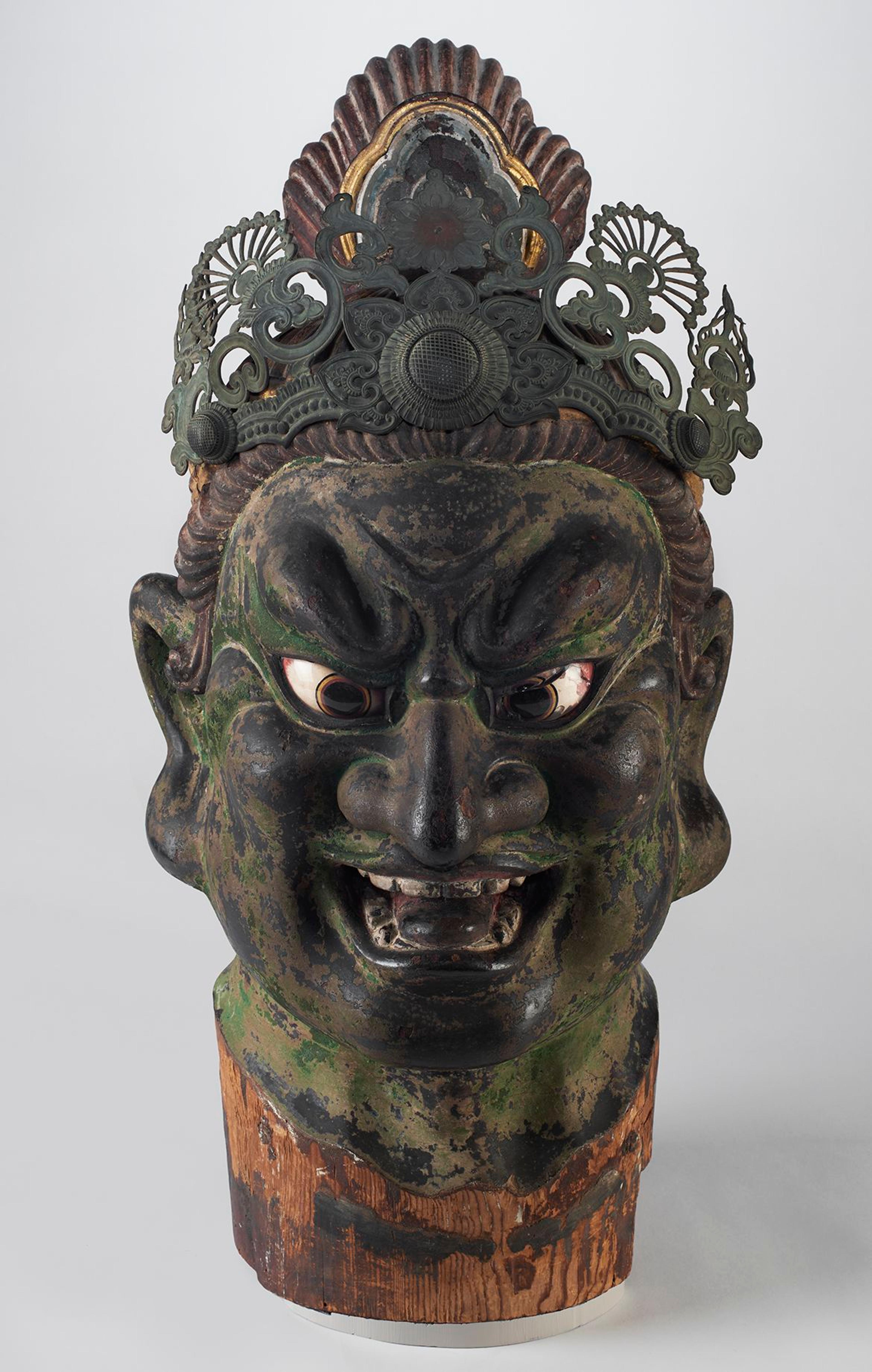Seated Four Armed Ganesha

Brooklyn Museum photograph
About this Brooklyn Icon
The Brooklyn Museum is commemorating its 200th anniversary by spotlighting 200 standout objects in its encyclopedic collection.
This sculpture represents the elephant-headed god Ganesh, one of the most popular deities in Hinduism. Ganesh lost his original head when his father, the god Shiva, cut it off in a fit of rage. Regretting his actions, Shiva offered his son an elephant head as a replacement. Having survived this ordeal, Ganesh now helps believers to overcome their own obstacles. Images of the god often depict his body as elephant-like, with thick limbs and stubby feet. Here he wears a skull in his crown, a reminder that he is the son of Shiva the Destroyer.
The religion of Hinduism reached the Indonesian islands through maritime trade with India early in the first millennium C.E. Royal patrons erected large Hindu temples throughout the island of Java, using the local volcanic stone. This Ganesh is carved from that lava rock, and it has traces of bright paint, suggesting that it was decorated somewhat recently, possibly for use in a modern temple. Because most of Java’s population converted to Islam in the 15th century, there are few active Hindu temples there today, so perhaps the sculpture was decorated after it left the island.
Caption
Seated Four Armed Ganesha, ca. 9th–10th century. Volcanic stone, 22 7/16 x 13 in. (57 x 33 cm) mount (overall with object): 23 1/2 × 12 × 11 1/4 in. (59.7 × 30.5 × 28.6 cm). Brooklyn Museum, Gift of Mr. and Mrs. Paul E. Manheim, 69.125.7. (Photo: Brooklyn Museum)
Tags
Collection
Collection
Title
Seated Four Armed Ganesha
Date
ca. 9th–10th century
Geography
Place made: Java, Indonesia
Medium
Volcanic stone
Classification
Dimensions
22 7/16 x 13 in. (57 x 33 cm) mount (overall with object): 23 1/2 × 12 × 11 1/4 in. (59.7 × 30.5 × 28.6 cm)
Credit Line
Gift of Mr. and Mrs. Paul E. Manheim
Accession Number
69.125.7
Have information?
Have information about an artwork? Contact us at
